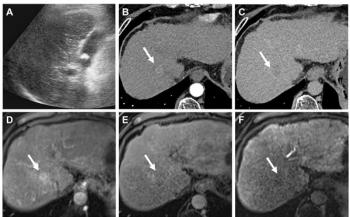
F-18-FLT PET Assesses Glioma Treatment Progress
F-18-flurorothymidine PET appears to be useful in assessing the grade and proliferation in gliomas, especially in newly diagnosed patients.
F-18-flurorothymidine PET appears to be useful in assessing the grade and proliferation in gliomas, especially in newly diagnosed patients, according to two studies in the Journal of Nuclear Medicine.
The
Yamamoto’s team reviewed the use of 3'-deoxy-3'-F-18-fluorothymidine (F-18-FLT) PET for providing prognostic information on 36 new patients and 20 patients with recurrent gliomas. The patients underwent PET scans and tissue specimens were obtained for pathological diagnosis. The findings from the tissue specimens were compared with image analysis, tumor-to-normal (T/N) ratio that had been performed by two nuclear medicine physicians.
The results showed that there was a significant difference between the T/N ratio among both the new and recurrent gliomas, regardless of grade. F-18-FLT uptake correlated more strongly with the proliferative activity in newly diagnosed gliomas than in recurrent ones. They also provided a more comprehensive view to determine grade tumor.
In Idema’s study, the team evaluated 26 patients with glioma who underwent preoperative F-18-FLT PET/CT scans and T1-weighted MRI of the brain after contrast application. The researchers calculated the maximum standardized uptake value (SUVmax) and three different PET segmentation methods were used to estimate the proliferative volume. The prognostic value of the SUVmax and the different methods to approximate proliferative volume for overall survival were then assessed.
The mean overall survival for the study participants was 397, with 19 patients dying during this period. Based on this follow-up information, it was determined that the signal-to-background ration (SBR) for an adaptive threshold delineation (PVSBR) method showed a significantly better association with overall survival than the SUVmax or the other two PET segmentation methods.
“The predictive value of the proliferative volume for the overall survival of patients seems to be independent of the postoperative treatment, explained Idema in a release. The importance for the patients is the possible utilization of 18-F-FLT PET to select the most appropriate treatment options. The very limited burden that the procedure causes to the patient is a further asset.”
While such imaging agents’ use is still in the research phase, Yamamoto said, “We hope that these findings will be helpful for identifying the role of F-18-FLT in assessing the response to antiproliferative treatment in patients with gliomas.”
Newsletter
Stay at the forefront of radiology with the Diagnostic Imaging newsletter, delivering the latest news, clinical insights, and imaging advancements for today’s radiologists.




























